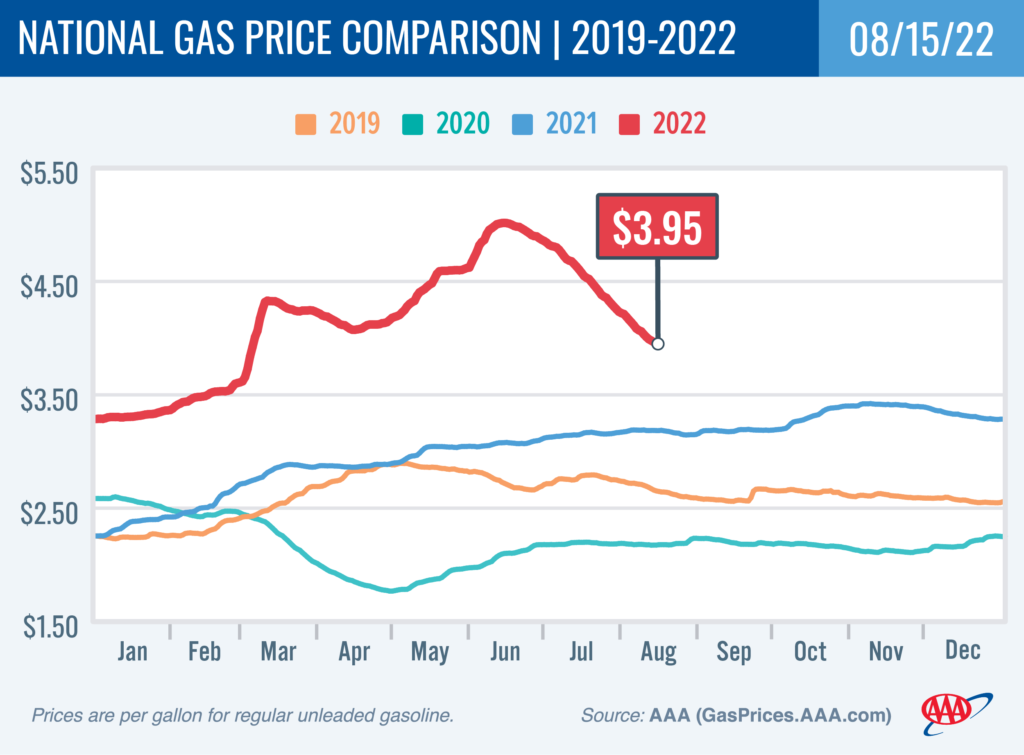WASHINGTON, D.C. — The national average for a gallon of regular gas fell 10 cents in the past week to $3.95, due primarily to stable oil prices and fewer drivers than usual fueling up.
“Falling pump prices may eventually lead to more drivers hitting the road again,” said Andrew Gross, AAA spokesperson. “But that hasn’t happened yet. Instead, many drivers are waiting for prices to fall further before reverting to their typical driving habits.”
AAA finds that drivers are making significant changes to cope with high pump prices. In a recent survey, almost two-thirds of U.S. adults have changed their driving habits or lifestyle since March. Drivers’ top two changes to offset high gas prices are driving less and combining errands.
According to data from the Energy Information Administration (EIA), gas demand rose from 8.54 million b/d to 9.12 million b/d last week. However, the rate is 307,000 b/d lower than last year. Also, total domestic gasoline stocks decreased by 5 million bbl to 220.3 million bbl. Although gasoline demand has risen and supplies have tightened, easing oil prices have helped lower pump prices. If oil prices edge lower, drivers will likely see falling pump prices.
Today’s national average of $3.95 is 62 cents less than a month ago, but 77 cents more than a year ago.

Quick Stats
- The nation’s top 10 largest weekly decreases: Maine (−19 cents), Colorado (−18 cents), West Virginia (−16 cents), Arizona (−15 cents), Illinois (−15 cents), New Mexico (−14 cents), Florida (−13 cents), Nebraska (−13 cents), Arkansas (−13 cents) and Kansas (−13 cents).
- The nation’s top 10 least expensive markets: Texas ($3.45), Arkansas ($3.47), Tennessee ($3.50), Oklahoma ($3.50), South Carolina ($3.50), Georgia ($3.51), Mississippi ($3.52), Kansas ($3.53), Missouri ($3.53) and Alabama ($3.54).
Oil Market Dynamics
At the close of Friday’s formal trading session, WTI decreased by $2.25 to settle at $92.09. Although crude prices declined at the end of the week due to concerns that an economic slowdown could cause crude demand to stagnate or decline, prices rose earlier in the week after the U.S. Bureau of Labor Statistics reported a smaller than expected increase in inflation last month at 8.5 percent. The rise in market optimism helped to boost prices despite EIA reporting that total domestic crude supply increased by 5.4 million bbl. For this week, oil prices could continue to decline if demand concerns persist.
Drivers can find current gas prices along their route using the AAA TripTik Travel planner.
